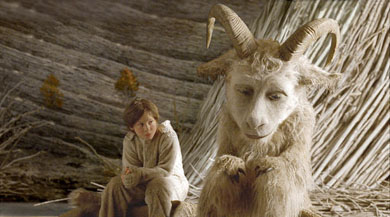|
|
Movie Review: Where the Wild Things AreBy Matthew HuntleyOctober 20, 2009
Jonze's film essentially follows the same arc as the book, but it adds more. Young Max (Max Records) is an imaginative but turbulent little boy who disrupts his mother's date, bites her on the shoulder and runs away from home. He's out of control and likes to wrestle the family dog and dress in a wolf's costume (a metaphor for his ferocious nature). He doesn't have many friends and he's ignored by his older sister. It's no wonder he dreams up the Land of the Wild Things, where only the things he wants to happen, happen. He befriends troll-looking monsters like Carol (voiced by James Gandolfini) and KW (Lauren Ambrose), and they all jump, wrestle, howl, build forts and have mud ball fights together. Max convinces them he's their king and has great powers. But, as Max learns, it's not wonderful all the time. Watching this film, I was reminded of The Wizard of Oz, whose theme of "There's no place like home" is very present here. But there are other, deeper meanings at work, including kids not fully understanding adult problems; friendship; honesty; love; forgiveness; and learning about yourself by observing others. What helps Jonze and his fellow filmmakers bring these ideas to life are the convincing creatures, who are a combination of CGI and Jim Henson's Muppets. Their size and tangibility make us believe they're really there, and so their symbolism is more deeply felt. Jonze also places them in real locations (if this film has any green screens, they're not easy to spot).
|

|
|
|

|
Thursday, October 31, 2024
© 2024 Box Office Prophets, a division of One Of Us, Inc.


